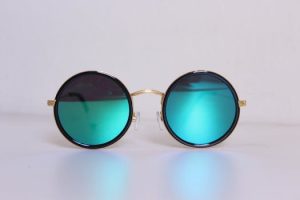Zero-Gravity Glamour: Designing for Space Tourism
The concept of space tourism has been gaining significant attention in recent years. While the idea may seem far-fetched to some, the reality is that space travel for leisure is no longer just a dream. With the emergence of private space companies like Virgin Galactic and SpaceX, space tourism is becoming a tangible possibility. As this industry continues to develop, the question of designing for space tourism arises. With zero-gravity being a key factor in space travel, how does one design for this unique environment? In this article, we will explore the concept of “zero-gravity glamour” and how it plays a role in designing for space tourism.
The Rise of Space Tourism
For decades, the idea of travelling to space has been reserved for highly trained astronauts and the wealthy few who could afford it. However, with the advancements in technology and the rise of private space companies, the possibility of space travel for leisure is becoming a reality. In 2001, American businessman Dennis Tito became the first-ever paying space tourist, and since then, there have been a total of seven space tourists, with more slated to go in the near future.
With this exciting new industry on the horizon, design plays a crucial role in the overall experience of space tourism. Designing for space travel requires a deep understanding of not only the technical aspects but also the aesthetic and human factors that come into play.
The Concept of Zero-Gravity Glamour
When we think of space travel, we often envision a barren, metallic environment with no hint of luxury or glamour. However, as space tourism gains popularity, the concept of “zero-gravity glamour” is emerging. Zero-gravity glamour refers to the fusion of luxury, technology, and practicality in the design of space vehicles and accommodations for space tourists.
Space tourists are not just looking for a trip to space; they are seeking a unique and luxurious experience. As such, designers must strike a balance between the challenges of zero-gravity and the expectations of their high-end clients.
Challenges of Designing for Zero-Gravity
The most significant challenge designers face when creating a space tourism experience is designing for zero-gravity. In this environment, traditional design principles do not apply. For instance, objects do not stay in one place, and gravity cannot be relied upon to hold things down. This means that every aspect, from furniture to waste management systems, needs to be carefully designed and tested to ensure functionality in zero-gravity.
Another challenge designers face is the limited space available in spacecraft. When designing for space travel, every square inch counts, and designers must be proactive in finding solutions to maximize space while still maintaining a luxurious and comfortable experience for their clients.
The Role of Technology
Technology plays a crucial role in the design of space tourism experiences. From advanced robotics to virtual reality, technology is continuously evolving and opening up new possibilities for designers. For instance, designers are now using virtual reality to simulate zero-gravity and test out their designs before they are built. This not only saves time and resources but also allows for a more precise and efficient design process.
Additionally, technology allows for the integration of smart and sustainable features in space vehicles and accommodations. For example, designers can incorporate smart lighting and air purification systems to improve the overall experience for space tourists.
The Aesthetics of Space Design
Aside from the technical and practical aspects, the aesthetics of space design also play a significant role in creating the perfect zero-gravity experience. Space tourists are not just looking for a trip to space; they want to experience something unique and unforgettable. This means that designers must go beyond function and consider the visual and sensory elements of their designs.
The use of lighting, color, and materials can transform the cold and sterile environment of space into a visually stimulating and luxurious one. High-end finishes and furnishings, combined with carefully selected colors and lighting, can create a luxurious and comfortable ambiance for space tourists.
The Future of Zero-Gravity Glamour
As the space tourism industry continues to grow, so will the concept of zero-gravity glamour. With companies like Virgin Galactic and SpaceX actively working on making space travel more accessible, designers will have more opportunities to push the boundaries and create truly unique and luxurious experiences for their clients.
Furthermore, the rise of space tourism will also drive technological advancements, allowing for even more possibilities in the design of zero-gravity environments. From advanced robotics to 3D printing, the future of zero-gravity glamour is one of exponential growth and innovation.
In Summary
The concept of “zero-gravity glamour” is revolutionizing the world of space travel. As the industry continues to grow, designers must embrace the challenges and opportunities that come with designing for zero-gravity. By considering the technical, aesthetic, and human aspects of space design, designers can create luxurious and unforgettable experiences for space tourists. With the future of space tourism looking bright, the possibilities for zero-gravity glamour are endless.










